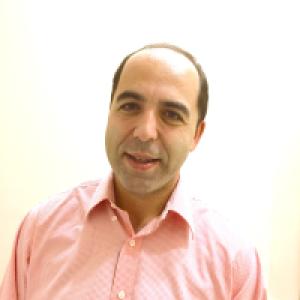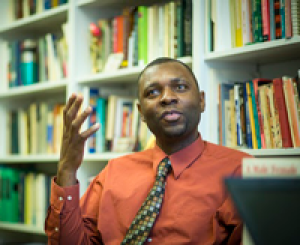Resources

Since Trump became a candidate in the 2016 US presidential race, educators have continued to reflect on how his political presence might influence pedagogy. Personally, I find myself in a familiar quagmire: to what extent do I focus on current events in my Islamic studies courses? If I wanted to, each class session could devote itself exclusively to political developments, domestic and international; this has been the case for years. Trump’s incendiary comments, policy moves, and cabinet picks who malign Muslims, exacerbate this quagmire. Trump, for example, said that “Islam hates us” in a March 2016 interview with CNN’s Anderson Cooper. His cabinet picks and advisors have endorsed similarly disturbing, perhaps willfully ignorant, positions and rhetoric. In this blog post, I will discuss some strategies, as well challenges, for how Islamic studies teachers might react to a Trump administration in a classroom context, with special attention to building positive narratives in addition to challenging existing ones. A recent Executive Order bans travel to the US from nationals of several Muslim-majority countries. In the language of The Intercept’s Zaid Jilani, “If we bombed you, we ban you.” As students, professors, and researchers—even those with green cards—find themselves in limbo, the EO has already sent reverberations across the lives of Muslims in the US and abroad. Fortunately, many scholars of Islam remain positively engaged in public discourse and efforts toward bridge-building and political problem-solving on an ongoing basis. Ilyse Morgenstein-Fuerst wrote a blog post for the University of Vermont, “Trump 2016: The View from Islamic Studies,” in which she details the connections between Trump’s rhetoric, cabinet choices, and their consequences. Caleb Elfenbein, an author for this “Teaching Islam” blog, has contributed to an important project that maps anti-Muslim crimes in the US. Also chilling is Mohammad Fadel’s article for The Islamic Monthly that details worst-case scenarios for Muslims under a Trump administration, including comparisons with Japanese internment camps. This is all to say that there are simply too many, individual as well as cumulative, momentous and worrisome news headlines to introduce to an undergraduate Islamic studies course while still covering other material in the course. Are the Challenges (that) Different than Before? Effective pedagogy includes understanding one’s context, including institutional goals, student demographics, and the current political landscape. An effective way, I find, to invite students to draw personally meaningful connections to course material is to always keep in mind popular symbols and ideas that bear, even indirectly, on what we study. The absurdity of mainstream media coverage of Islam can also offer some cathartic moments of laughter, which also helps ease students into challenging discourses. In terms of noteworthy contributions that Muslims make to American public life, we saw Linda Sarsour—a Palestinian American activist—lead organizing efforts for the Women’s March on Washington. Keith Ellison, the first Muslim member of Congress (now in his sixth term), received the endorsement of Bernie Sanders for chair of the DNC, and the funeral of Muhammad Ali in June 2016 attracted international media attention, including its full broadcast on Fox News. In a beautifully narrated but also depressing account, NPR’s Asma Khaled details what it was like, as a Muslim woman, to cover Trump’s campaign during the election. As Amir Hussain adroitly argues in his recent book, Muslims and the Making of America (Baylor, 2016), we have much to learn about American cultural fabric by studying the role of Islam and Muslims in our history, even as it continues to unfold. In my capacity as host for New Books in Islamic Studies podcasts, I have interviewed a number of scholars—including Amir Hussain, Sophia Arjana, and Todd Green—about how current political affairs impact the lives of Muslims in the US. I keep my students in mind as one audience for these interviews, and I have repeatedly assigned my students the interview I conducted with Todd Green, on Islamophobia (which prospered in the American mainstream long before Trump reached the national spotlight). The Good, the Bad, and the Mystical Despite the many humanizing accounts about Muslims that my students study, these same students also tell me that they aren’t surprised to learn about the pervasive Islamophobia in the news cycle. But don’t some details shock them, even a little bit? In a 2015 Public Policy Poll, for example, about 30% of Republicans and 19% of Americans supported bombing Agrabah—the fictional city from Disney’s Aladdin. Among Trump supporters: 41%. As I wrote in a previous “Teaching Islam” blog post, students can use current political tensions, and how they respond to them, as a way to make sense of Sufi conceptions of spiritual growth. “Do I,” students might ask themselves, “harbor anything related to these views that I find so toxic and ignorant?” I’m currently teaching Islamic Mysticism for the third time, and I’ve implicitly chosen in past iterations to focus less on current events than I do in my introductory courses on Islam, or even in my courses on the Qur’an in which we explicitly explore contentious political topics. This time, however, I find myself taking closer stock during class time of political context, and not only because of the most recent presidential election. I think students likewise crave a balance between attention to (depressing) current events and engaging with aesthetics and intellectual discourse that don’t immediately relate to the latest fake news (or “alternative facts”?) on their social media feeds. In conclusion, I would like to include a brief reflection on student activism and its connection to teaching. As a graduate student at UC Santa Barbara, I witnessed some student groups host anti-Muslim ideologues including Dennis Praeger, David Horowitz, and Daniel Pipes. Frequently, I would watch many other student groups respond with formal protests, which I found both heartening and problematic. Indeed, protest is perhaps part of the human spirit; it encapsulates much of what it means to thrive in a democratic society. It’s also an effective catalyst for change as numerous examples from history attest. At the same time, however, I regularly remind myself that part of the difficult intellectual work of teaching and learning involves building narratives, not only challenging visible narratives. Both are necessary, and my course on Sufism helps me, and I hope my students as well, appreciate the significance of this balance, the complementarity between jamal (beauty) and jalal (majesty)—two sides of the same human condition. Where do you strike your balance in terms of navigating planned course material with course-related current events as they arise throughout the term? Please share in the comments section.

On November 8, 2016, I watched Ana Navarro telling ABC News that “there is a White America and there is a Brown and Black America, Chinese America, Muslim America.” Muslims, of course, are white, brown, black, Chinese, and many other things as well, so from a historical standpoint it is surely curious, if nothing else, to see how adherents of a major world religion have been squeezed into the “non-White” umbrella of the American racial classification scheme. Navarro’s comments got me thinking about my own research on Islam in the Soviet Union and the question of how large, cosmopolitan, majority non-Muslim societies have resolved the problem of finding a “niche” for Islam. I see many parallels between the political context of Islam in America today and discussions that took place in the colonial empires in the late-19th and early-20thcenturies. America is not an empire. Yet, like the British, French, and Russian empires, the U.S. is cosmopolitan, multiethnic, multifaith, and hosts a growing and prominent Muslim minority. The British, French, and Russian empires have a legacy of incorporating and dealing with Muslims that our society should be aware of. This legacy should be especially important to anyone teaching or talking about, the history of the modern Islamic world, anywhere. On the one hand, the elites of these empires, like many members of the American elite today, were firmly convinced of the inherent fanaticism and insularity of Islam, though they disagreed vehemently on whether such fanaticism stemmed from Islamic dogma (whatever that might be), or the historical and cultural circumstances of Muslim societies. The fact that these elites were Christian, secular, or some combination of the two, obviously colored their views about Islam, but so did the reality that their geopolitical interests placed them in an adversarial relationship with large swathes of the Islamic world. On the other hand, there was a vital and compelling need to extend Muslims some sense of belonging in the polity. Across the 19th century, the British, French, and Russians all sought to institutionalize Islam through the patronage of religious scholars, foundations, and shrines, and through various attempts to codify or otherwise make sense of Islamic law. With the right kind of interference, it was hoped, Islam could be civilized into a form that would make it worthy of inclusion and protection in the imperial framework. Why does this legacy matter in today’s college classroom? It is only a small overstatement to say that the current liberal/conservative impasse about Islam is a reiteration of an old colonial debate. Take, for example, the comments of Newt Gingrich who stated that “sharia is incompatible with Western civilization. Modern Muslims who have given up sharia—glad to have them as citizens.” It is perhaps fitting that Gingrich has a Ph.D. in history—though I realize I’m giving him too much credit here—because these two sentences are a crude restatement of the old colonial accommodation with Islam: join the imperial polity, but for God’s sake, practice the kind of Islam that you can show up to the Club with! In my classes on 20th-century history, which focus heavily on Muslim countries such as Afghanistan and Iran, we do not regularly discuss American politics or current events. We do, however, talk a lot about colonialism, and I try to make my students see the past through prisms that are relevant to their own lives. As it turns out, this has been relatively easy when it comes to the relationship between Islam and the state.

Kenneth Ngwa, Ph.D. Associate Professor of Hebrew Bible Drew Theological School In my “Introduction to the Hebrew Bible” syllabus, a couple of sessions are reserved for the Exodus story: its claims about liberation; the use of official “war gear” against civilians; the dread of nightfall; legislative debates; witness accounts to the sights and sounds of violence; the importance of memory, etc. “After” Ferguson, teaching this biblical story almost sounds too convenient. Yet, engaging race and racism is like solving a math equation: long division with remainders. The burden of structural racism is not just its deadly power,...

Dean J. Johnson, Ph.D. Peace & Conflict Studies Assistant Professor of Philosophy West Chester University of Pennsylvania Silence, guilt and fear are obstacles to justice and democracy. My white brothers and sisters, we have often let the fear of breaking the rules of certain types of discourse trap us. Too often we let fear immobilize us and we remain silent. Let’s take for example the fear of talking and teaching about race as a white person. We believe the discourse of whiteness that says racism and the struggle for racial justice are not white problems and/or that whites are...